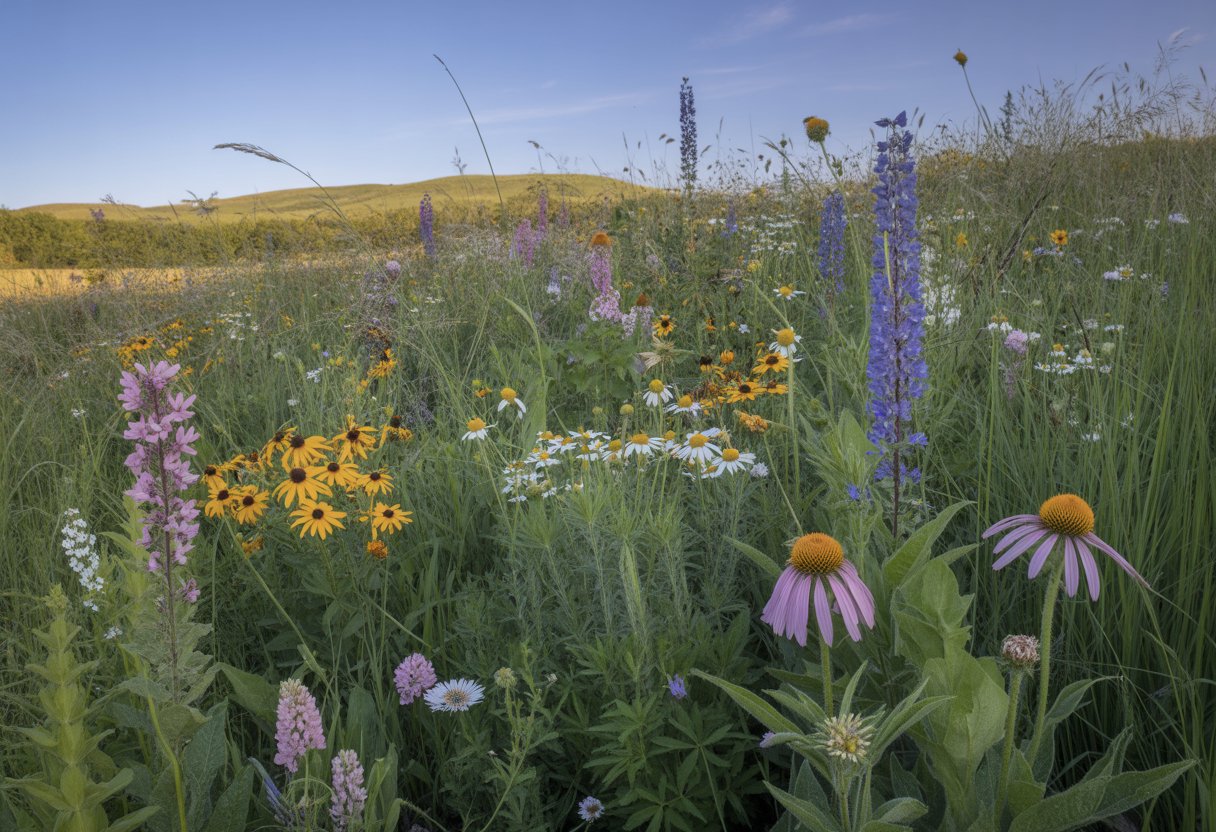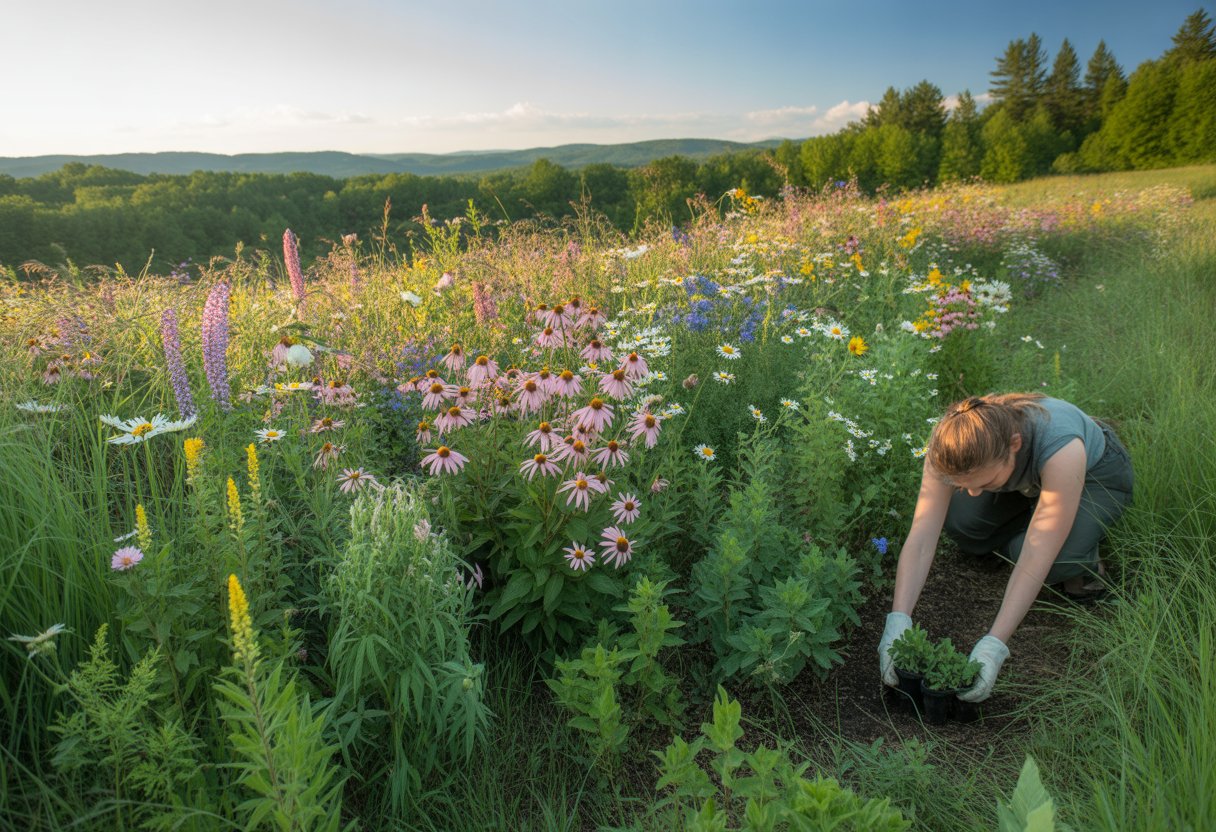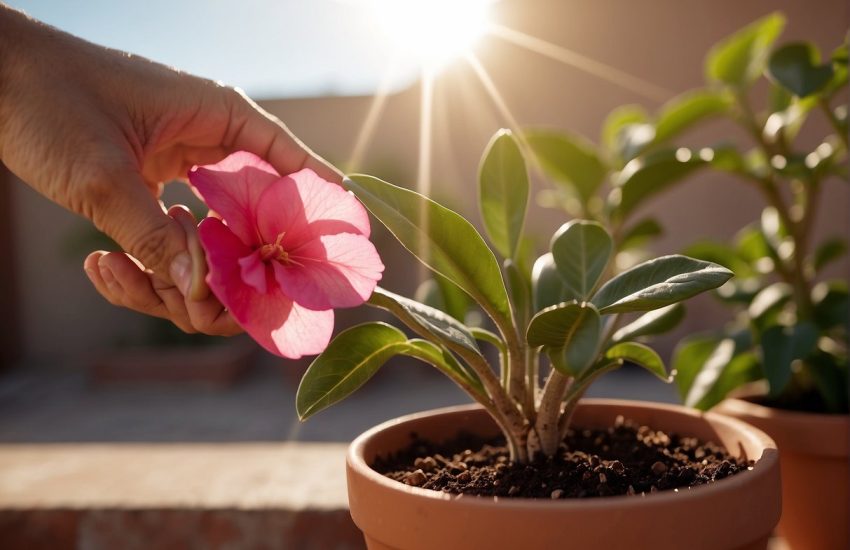Wildflower Meadow Planting Vermont Guide for Successful Growth and Maintenance
Planting a wildflower meadow in Vermont means getting to know the local climate, soil, and which native wildflowers actually thrive here. Honestly, the real trick to success is picking native species that can handle Vermont’s growing season and soil quirks. It’s the best way to make sure your meadow gets established and supports local ecosystems.

Vermont’s landscape and cooler climate shape which wildflowers will really take off. Meadows that blend grasses and wildflowers attract pollinators and create a low-maintenance, natural look.
If you plan carefully—especially with site prep and seed selection—you’ll end up with a meadow that fits right into the Vermont scene. It takes patience, but the payoff is worth it for both you and the ecosystem.
Planning and Preparing a Wildflower Meadow in Vermont
To get a wildflower meadow going in Vermont, start with a good look at your site, prep the soil, and pick the right seed mixes. These choices shape plant health and how well your meadow lasts.
Site Selection and Assessment
Picking the right spot matters. Find an area that gets at least 6 hours of sunlight daily, since most wildflowers love the sun.
If you’ve got too much shade, expect slower growth, especially for sun-loving perennials. Vermont soils often run to clay, which drains poorly and compacts easily.
Check soil moisture—soggy spots might need better drainage. Steer clear of areas with heavy shade or lots of foot traffic.
Look for existing plants that might cause trouble. Pull out invasives and grasses that hog nutrients.
Think about how close you are to water and how you’ll keep things from getting overgrown down the line.
Soil Preparation and Compost Application
Good soil prep makes all the difference for seed germination and getting plants established. Start by clearing out weeds and grasses, either by tilling or solarizing.
If you’re dealing with Vermont’s clay soil, mix in 1-2 inches of compost. This boosts fertility, helps with drainage, and gives microbes a kickstart.
After adding compost, till lightly to blend everything together. Rake the top so you get a fine, firm seedbed.
Try not to overdo it on fertility—too much, and grasses will crowd out your wildflowers.
Choosing the Right Seed Mix and Native Species
Go for seed mixes that balance perennials, annuals, and native species built for Vermont’s climate. Black-eyed Susan and Purple Coneflower are solid native perennials for long-term color and stability.
A diverse mix keeps things blooming from spring through fall. Match your seed choices to your soil type, whether it’s clay or something else.
Skip the non-natives—they can mess up the ecosystem balance.
Here’s a quick breakdown:
| Type | Benefit | Example Species |
|---|---|---|
| Perennials | Return yearly, establish deep roots | Wild Bergamot, Butterfly Weed |
| Annuals | Quick bloom, support pollinators | Evening Primrose, Coreopsis |
| Native Species | Support native wildlife and soil health | Aster, Blazing Star |
Plant seeds in early spring or late fall. Choose the right species, and your meadow will hang tough and look great.
Best Planting Practices for Vermont Wildflower Meadows
Getting a wildflower meadow started in Vermont means paying attention to timing, how you sow the seeds, and prepping for the seasons. If you get the timing and seeding right, you’ll set your flowers up for strong, lasting growth.
When to Plant: Timing and Seasonal Considerations
In Vermont, the best time to plant wildflower seeds is early spring or late fall. For spring, wait until after the last frost—usually mid-April to early May—when soil temps hit about 50°F (10°C).
Fall planting’s nice because seeds get a natural cold stratification over winter. If you sow between late September and early November, the freeze-thaw cycles help boost germination when spring rolls around.
Don’t plant in midsummer. The heat and dry spells just make it tough for seeds to sprout. Early moisture is key.
Seeding Methods and Rates
Broadcast seeding is the go-to for wildflower meadows. Just scatter the seed evenly over your prepped soil.
You can use a mechanical spreader or just toss it by hand if you’re working with a small patch. Seeding rates depend on your mix, but usually fall between 1 to 3 pounds per 1,000 square feet.
If you go heavy on the mix, use a lower rate to avoid overcrowding. After spreading, rake lightly so seeds make good contact with the soil—don’t bury them more than 1/8 inch.
Firm the soil with a roller or just walk over it to help seeds soak up moisture.
Fall Planting for Long-Term Success
Planting in the fall gives you a leg up in Vermont. Cold stratification breaks seed dormancy, so you get better germination in spring.
Prep the site in late summer by getting rid of grasses and weeds. Then, spread the seeds evenly and press them in lightly.
Fall planting also means fewer weeds to compete with, since many annual weeds pop up in spring. Plus, autumn rains help get your seedlings started.
If you sow between late September and early November, you’ll usually see the best long-term results.
Selecting and Growing Wildflowers and Perennials

A thriving wildflower meadow in Vermont really comes down to picking plants that fit the local soil and weather. Mixing native plants with perennials and annuals boosts resilience and keeps blooms coming, all while helping the ecosystem.
Recommended Vermont Wildflower Species
For Vermont, Rudbeckia hirta (black-eyed Susan) does great in full sun and well-drained soil, giving you those classic yellow flowers. Symphyotrichum novae-angliae (New England aster) blooms late and draws in pollinators.
Eupatorium perfoliatum (boneset) likes moist spots and adds clusters of white flowers—perfect for wetter areas. Andropogon gerardii (big bluestem grass) brings structure, while yarrow handles drought with ease.
If you want more color, toss in annuals like cosmos and cornflower. Daisies, sweet william, and catchfly add even more variety, but keep native plants front and center for a healthy ecosystem.
Attracting Pollinators and Supporting Wildlife
Choose plants that bees, butterflies, and native bugs love. Black-eyed susans and New England aster offer nectar and pollen when it’s needed most—mid to late summer.
Obedient plant and queen anne’s lace add some height and give pollinators places to land. A good mix of flowers keeps different species fed as the season changes.
If you leave some seed heads up through fall, birds will thank you in winter. Wildflower meadows also give cover to small animals and boost local biodiversity.
Blending Annuals, Perennials, and Native Plants
Perennials keep your meadow going year after year with less fuss. Lupine and yarrow help stabilize soil and even add nitrogen.
Annuals like calendula and baby’s breath fill in early gaps, bring pops of color, and attract pollinators fast. A balanced mix lets quick growers shine while native roots take hold.
Strong native species make maintenance easier since they shrug off pests and handle Vermont’s ups and downs. Your meadow will keep evolving, and you won’t have to micromanage it.
Managing Marshes, Bogs, and Moist Sites
For wet spots, go with moisture-tolerant plants like eupatorium perfoliatum and rushes. These can handle marshy soils and the occasional flood.
Planting here helps with water filtration and keeps erosion in check. Just be sure to match species to how wet the area gets.
Skip upland plants in these soggy zones—they’ll struggle and probably fail. Marsh and bog meadows need a little extra attention to stay healthy.
Maintaining and Enhancing Wildflower Meadows Over Time

Keeping a wildflower meadow looking good means staying on top of mowing, weed control, and encouraging biodiversity. If you time things right and focus on perennials, your meadow will stay healthy and eye-catching.
Mowing Schedules and Weed Management
When you mow really matters. In Vermont, mow your meadow once a year, ideally in late fall after seeds have dropped.
That way, wildflowers finish their life cycle and reseed for next year. If you cut too early, you’ll hurt perennials and lose seeds.
Rake up the clippings so you don’t end up with too much nutrient buildup—otherwise, weeds might take over. Watch for invasives like thistle and poison ivy.
Pull them by hand or use spot treatments with selective herbicides if you have to, but try not to mess with the native plants. Checking for weeds during the growing season helps you catch problems before they spread.
Fostering Biodiversity in the Landscape
Mixing up your plant species keeps the meadow ecosystem strong and helps pollinators thrive. Use a blend of native wildflowers and grasses that can handle Vermont’s weather.
Aim for plants that bloom at different times from spring to fall, so pollinators always have something to eat. Perennials like Black-eyed Susan, New England Aster, and Purple Coneflower add both color and value.
If you’ve got brush piles or woods nearby, leave them—they’re good for wildlife. Avoid planting just one species everywhere; a mixed seed blend keeps things interesting and supports more life.
Long-Term Care for Perennial Blooms
Perennials need more than just mowing to stay healthy. Every 3 to 5 years, go ahead and divide those clumps—it’s a simple way to keep them growing strong and not too crowded.
When winter rolls in, toss on a light layer of mulch or just leave some stubble behind. That helps protect the roots from harsh weather.
In early spring, some plants might get thirsty if it’s dry. Give them a little extra water if you notice them struggling.
Honestly, you don’t usually need to fertilize. Wildflower meadows actually do better on soil that isn’t overloaded with nutrients.
If you’re tempted to add anything, it’s smart to test your soil first. Too much fertilizer can invite weeds and grasses, which isn’t what you want if you love wildflowers.


